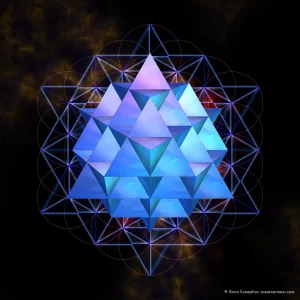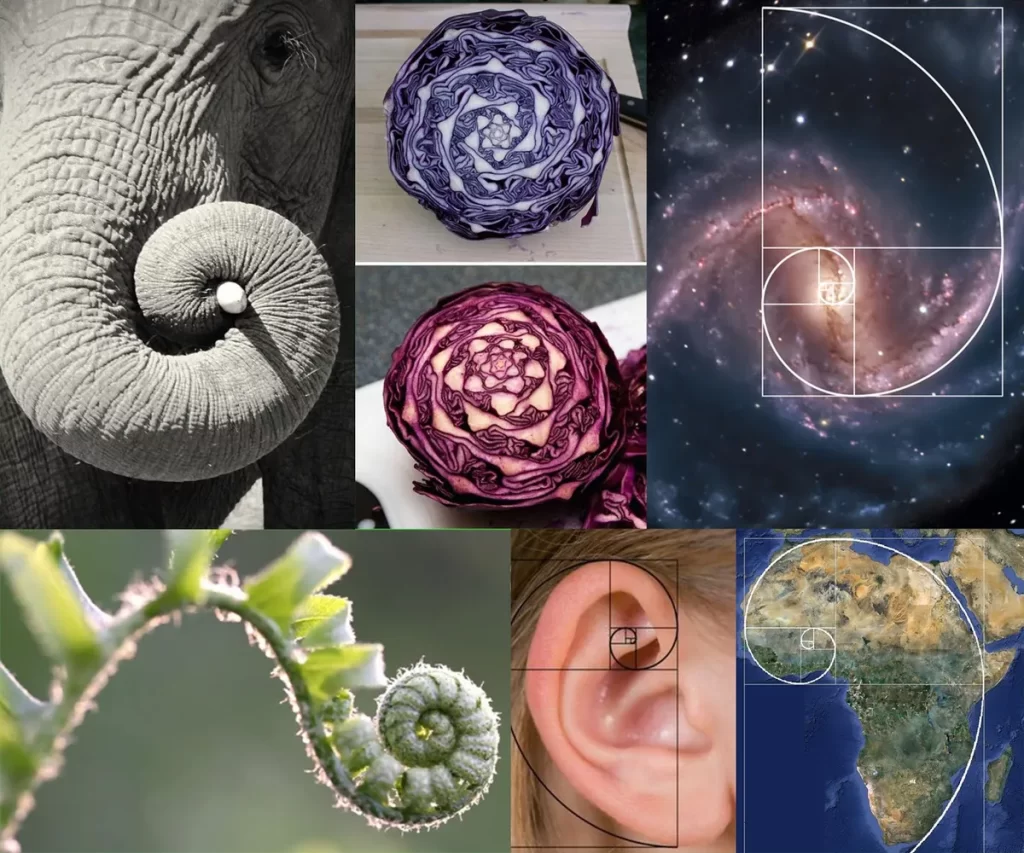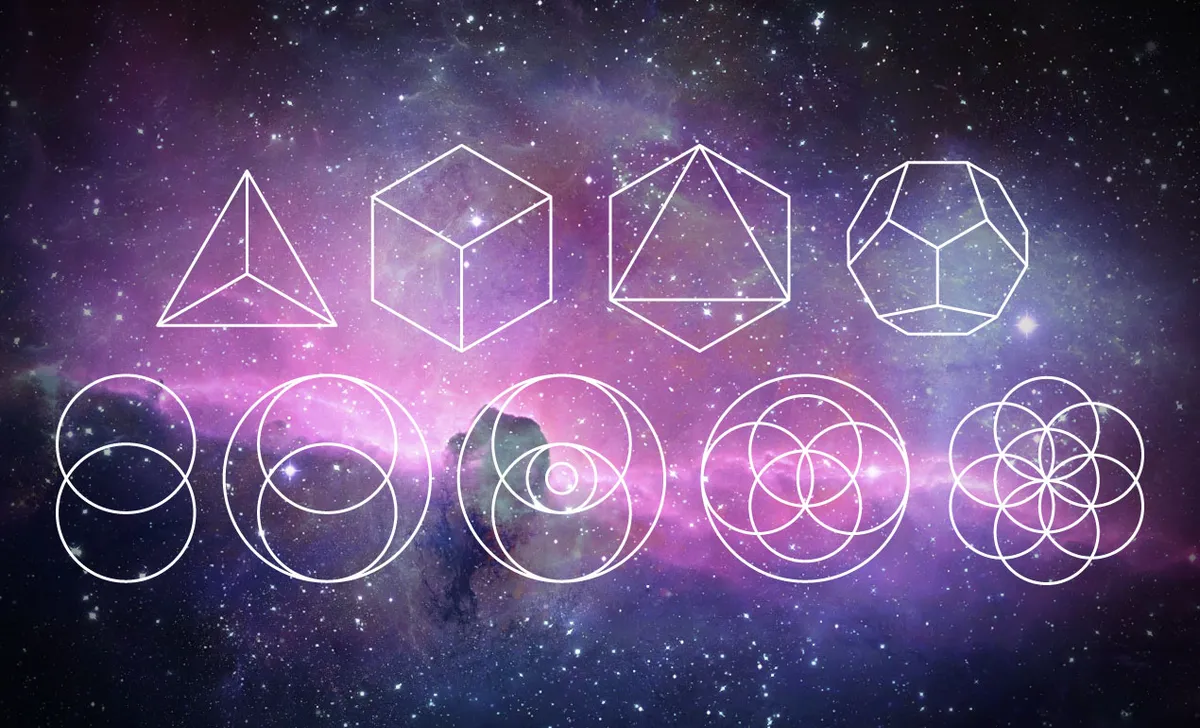Sacred geometry is a term used to describe the geometric patterns, shapes, and symbols that are believed to hold spiritual or metaphysical significance in various cultures around the world. These patterns and symbols are often found in religious and spiritual art, architecture, and design.
 Examples of sacred geometric shapes include the circle, triangle, square, and hexagon, as well as more complex patterns such as the Flower of Life, Metatron’s Cube, and the Sri Yantra.
Examples of sacred geometric shapes include the circle, triangle, square, and hexagon, as well as more complex patterns such as the Flower of Life, Metatron’s Cube, and the Sri Yantra.
These shapes are often associated with specific spiritual concepts and can be used in meditation, energy work, and other spiritual practices.
Sacred geometry has been studied and used by various cultures throughout history, including ancient Egyptian, Greek, and Hindu civilizations, as well as in modern-day spiritual practices and the study of the Kabbalah. Some people believe that working with sacred geometry can help them connect with higher states of consciousness, tap into universal energies, and bring balance and harmony to their lives.
Jain 108 says Sacred Geometry is a language of timeless symbols that permits communication between all peoples of this world and beyond. He says that the word sacred not only points to remembering who we are and how we are interconnected with the entire universe. 
Many examples of Sacred Geometry can be found in nature, including the human body and all throughout the universe. From your DNA all the way to galaxies, sacred geometry represents the fundamental principles and underlying structure of our universe.
Here are some interesting facts about Sacred Geometry:
- Sacred geometry is often associated with spiritual and metaphysical beliefs, but it has also been used in practical applications, such as in the design of sacred buildings and monuments.
- Many famous historical figures, including Leonardo da Vinci and Pythagoras, were known to have studied and used sacred geometry in their work.
- The Flower of Life, a complex sacred geometric pattern made up of overlapping circles, has been found in ancient temples and ruins all over the world, from Egypt to Mexico.
- The golden ratio, also known as the divine proportion, is a mathematical ratio found in many aspects of nature and art, and is often associated with sacred geometry.
- Some people believe that certain sacred geometric shapes, such as the pyramid or the cube, have specific energetic properties and can be used for healing or spiritual practices.
- Sacred geometry has been used in the design of many modern-day products and technologies, from computer chips to airplane wings.
- The study and use of sacred geometry has experienced a resurgence in popularity in recent years, particularly in spiritual and scientific communities.
